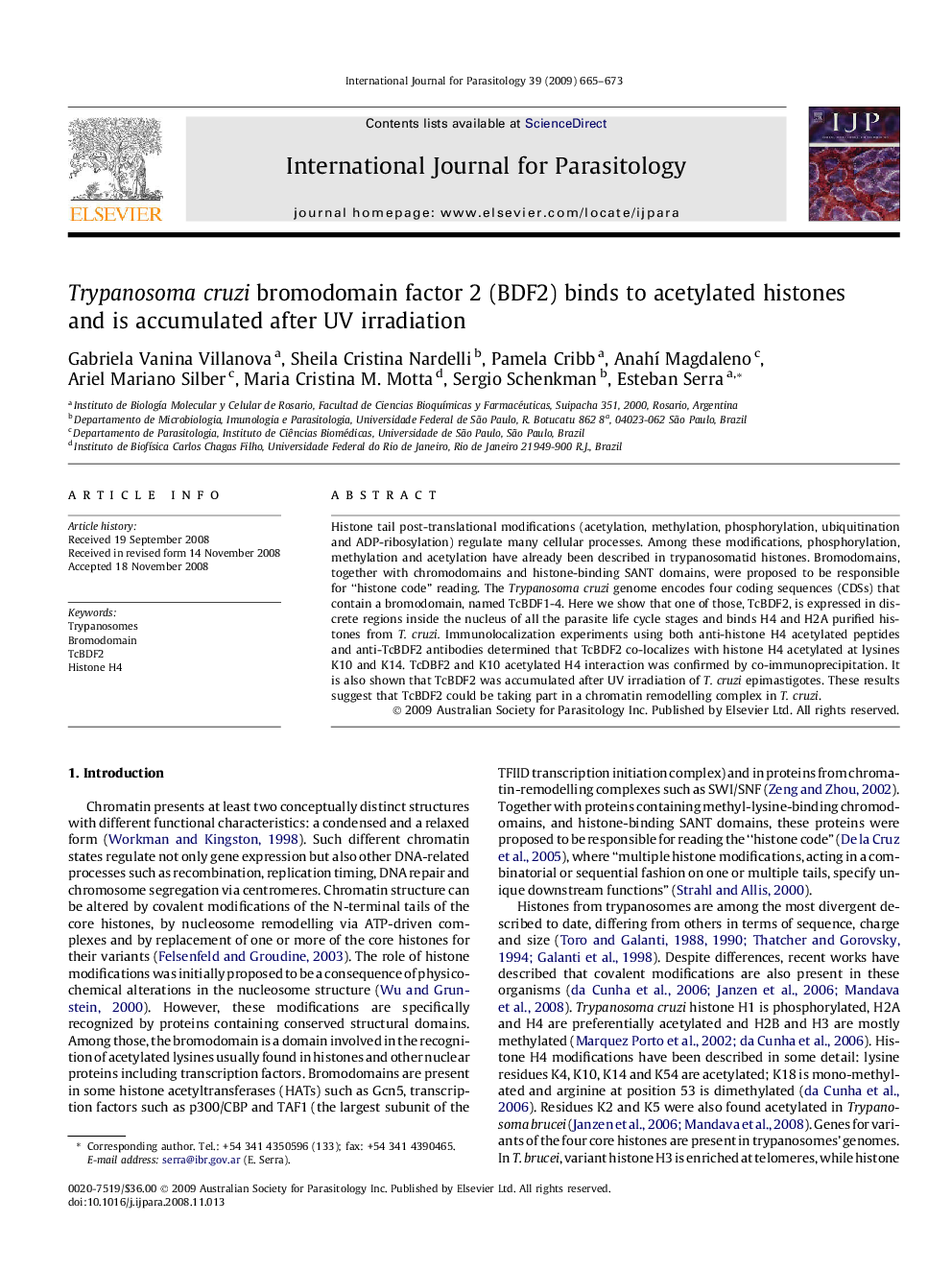| Article ID | Journal | Published Year | Pages | File Type |
|---|---|---|---|---|
| 2436484 | International Journal for Parasitology | 2009 | 9 Pages |
Histone tail post-translational modifications (acetylation, methylation, phosphorylation, ubiquitination and ADP-ribosylation) regulate many cellular processes. Among these modifications, phosphorylation, methylation and acetylation have already been described in trypanosomatid histones. Bromodomains, together with chromodomains and histone-binding SANT domains, were proposed to be responsible for “histone code” reading. The Trypanosoma cruzi genome encodes four coding sequences (CDSs) that contain a bromodomain, named TcBDF1-4. Here we show that one of those, TcBDF2, is expressed in discrete regions inside the nucleus of all the parasite life cycle stages and binds H4 and H2A purified histones from T. cruzi. Immunolocalization experiments using both anti-histone H4 acetylated peptides and anti-TcBDF2 antibodies determined that TcBDF2 co-localizes with histone H4 acetylated at lysines K10 and K14. TcDBF2 and K10 acetylated H4 interaction was confirmed by co-immunoprecipitation. It is also shown that TcBDF2 was accumulated after UV irradiation of T. cruzi epimastigotes. These results suggest that TcBDF2 could be taking part in a chromatin remodelling complex in T. cruzi.
